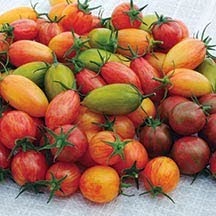A week or so before the end of May, I planted another personal favorite of mine, sunflowers. I have enjoyed growing sunflowers since I was 8 or 10 years old, and it was what got me hooked on gardening. Of course, I owe the majority of my love for gardening to my Mom & Dad, as well as my grandparents.
With my Mom's help, I started growing sunflowers to enter mail-in contests for the largest seed heads. Back then, I grew mostly the Russian Mammoth variety, which are known for producing enormous heads. Of course growing the sunflowers for seeds was related to another hobby of mine that I started at a young age also: bird watching.
 |
| Russian Mammoth Sunflowers |
The sunflowers I usually plant now are the decorative type. They take up less space and provide a great variety of color when they bloom. There are many varieties to choose from these days. What I have been doing the past several years is mixing a few varieties together to create a great assortment of colors. This year I used the and Evening Sun and Autumn Beauty varieties, which are common ones available at most stores that sell seeds:
 |
| Evening Sun Sunflower |
 |
| Autumn Beauty Sunflower |
The seeds germinated well and the plants have been progressing nicely. The other day I thinned/moved some of them around as to ensure they are evenly spaced. I always plant extra seeds in case they don't germinate well. Ideally the plants should be about a foot apart, however in this case they ended up about 6 or 8 inches apart. This will create a nice thick grouping.
 |
| The Sunflower Crop |
 |
| Moving Sunflowers |
 |
| Moving Sunflowers |
 |
| Sunflower Patch is Complete |
The sunflowers are at the point now where they will grow quickly. They are currently about 6 inches tall.
If you want to grow the Russian Mammoth or other seed variety, I would recommend spacing them further apart as those types are much larger and require more space.
Finally, I was able to get a fairly good photo of a tree swallow. As promised in an earlier posts, I said I would talk about the nesting boxes I have on my property. I have 10 total, 3 of which are near the pond, spaced about 50 feet apart. Every year these 3 bird houses are inhabited by tree swallows.
The tree swallows are fascinating to watch. They frequently skim across the surface of the pond in search of insects, and are very acrobatic. They also are fairly tame, as I was able to get pretty close to this one:
 |
| Male Tree Swallow |
Until next time, thanks as always for reading.





























